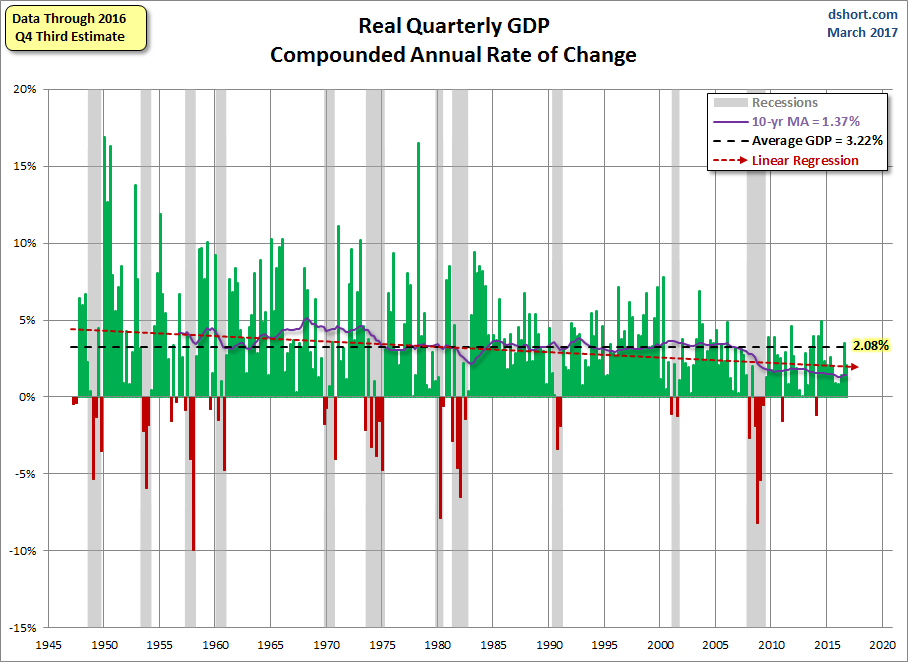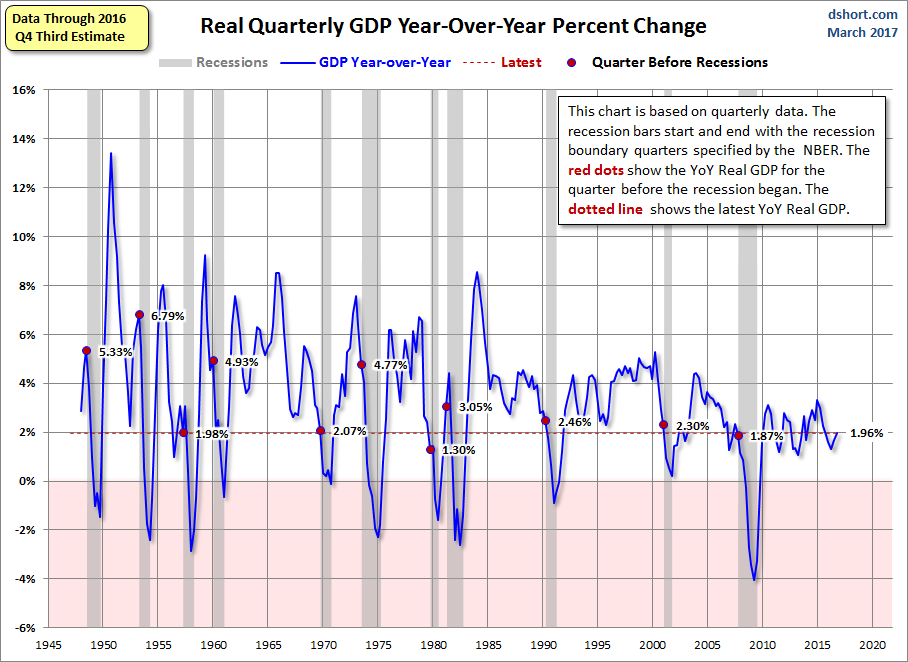Q4 GDP Third Estimate: Real GDP Adjusted Upward To 2.1%
The Third Estimate for Q4 GDP, to one decimal, came in at 2.1% (2.08% to two decimal places), an increase over 1.9% in the Second Estimate, but a decline from 3.5% in Q3 GDP. Investing.com had a consensus of 2.1%.
Here is the slightly abbreviated opening text from the Bureau of Economic Analysis news release:
Real gross domestic product (GDP) increased at an annual rate of 2.1 percent in the fourth quarter of 2016, according to the "third" estimate released by the Bureau of Economic Analysis. In the third quarter of 2016, real GDP increased 3.5 percent....
Real gross domestic income (GDI) increased 1.0 percent in the fourth quarter, compared with an increase of 5.0 percent in the third. The average of real GDP and real GDI, a supplemental measure of U.S. economic activity that equally weights GDP and GDI, increased 1.5 percent in the fourth quarter, compared with an increase of 4.3 percent in the third quarter.
The increase in real GDP in the fourth quarter reflected positive contributions from PCE, private inventory investment, residential fixed investment, nonresidential fixed investment, and state and local government spending that were partly offset by negative contributions from exports and federal government spending. Imports, which are a subtraction in the calculation of GDP, increased. [Full Release]
Here is a look at Quarterly GDP since Q2 1947. Prior to 1947, GDP was an annual calculation. To be more precise, the chart shows is the annualized percentage change from the preceding quarter in Real (inflation-adjusted) Gross Domestic Product. We've also included recessions, which are determined by the National Bureau of Economic Research (NBER). Also illustrated are the 3.22% average (arithmetic mean) and the 10-year moving average, currently at 1.37%.
(Click on image to enlarge)

Here is a log-scale chart of real GDP with an exponential regression, which helps us understand growth cycles since the 1947 inception of quarterly GDP. The latest number puts us 14.8% below trend, the largest negative spread in the history of this series.
(Click on image to enlarge)

A particularly telling representation of slowing growth in the US economy is the year-over-year rate of change. The average rate at the start of recessions is 3.35%. Nine of the eleven recessions over this timeframe have begun at a higher level of real YoY GDP.
(Click on image to enlarge)

In summary, the Q4 GDP Third Estimate of 2.1% topped forecasts but is well below the 3.5% GDP for the previous quarter.
Disclosure: None.



